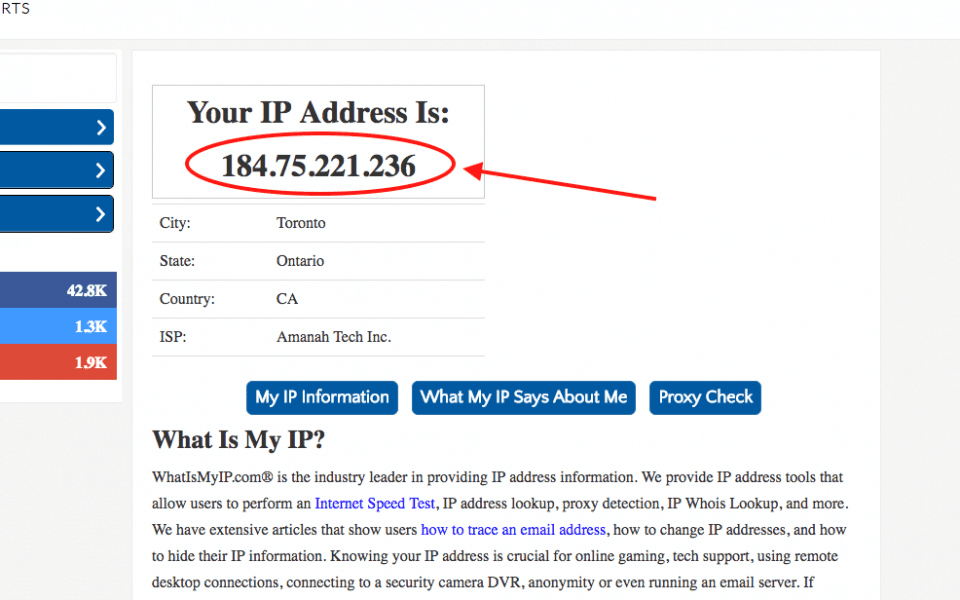

What's My IP Address For My Router? A Comprehensive Guide
Understanding your router's IP address is crucial for managing your home network effectively. Whether you're troubleshooting connectivity issues, configuring network settings, or securing your Wi-Fi connection, knowing how to find your router's IP address can be immensely helpful. In this article, we'll dive deep into the topic of IP addresses, specifically focusing on how to find your router's IP address, and what it means for your network. We’ll explore various methods, tools, and tips to help you gain a better understanding of your network.
As our lives become increasingly digital, the importance of being able to manage your network cannot be overstated. With the rise of smart devices and IoT (Internet of Things), knowing how to access and configure your router's settings is more relevant than ever. This guide is designed to provide you with all the information you need about your router's IP address, including its significance, how to find it, and what steps to take once you have it.
Whether you're a tech novice or a seasoned professional, this article aims to break down complex concepts into easily digestible information. By the end of this guide, you will have a thorough understanding of what your router's IP address is, why it matters, and how to locate and utilize it for your network needs.
Table of Contents
- What is an IP Address?
- Importance of Knowing Your Router's IP Address
- How to Find Your Router's IP Address
- Configuring Your Router Using IP Address
- Common Router IP Addresses
- Troubleshooting IP Address Issues
- Security Tips for Your Router
- Conclusion
What is an IP Address?
An IP address (Internet Protocol address) is a unique string of numbers separated by periods (IPv4) or colons (IPv6) that identifies each computer using the Internet Protocol to communicate over a network. An IP address serves two main functions: it identifies the host or network interface and provides the location of the network in the form of a numerical label.
Importance of Knowing Your Router's IP Address
Knowing your router's IP address is essential for several reasons:
- Network Configuration: Accessing your router's settings allows you to configure network settings such as SSID, password, and security protocols.
- Troubleshooting: When facing connectivity issues, knowing the IP address allows you to log into the router for diagnostics.
- Security: Regularly checking your router’s settings can help prevent unauthorized access and ensure your network is secure.
How to Find Your Router's IP Address
Finding your router's IP address can be done using various methods depending on your device's operating system. Here’s how you can do it:
Finding IP Address on Windows
1. Open the Command Prompt by typing “cmd” in the Windows search bar and hitting Enter.
2. Type the command ipconfig and press Enter.
3. Look for “Default Gateway” under your network connection. The number next to it is your router's IP address.
Finding IP Address on Mac
1. Click on the Apple menu and select “System Preferences.”
2. Select “Network.”
3. Choose your active network connection (Wi-Fi or Ethernet) and click “Advanced.”
4. In the TCP/IP tab, you’ll see the router's IP address listed next to “Router.”
Finding IP Address on Mobile Devices
For iOS:
- Go to Settings > Wi-Fi.
- Tap the (i) icon next to your connected network.
- Your router’s IP address will be displayed next to “Router.”
For Android:
- Go to Settings > Network & Internet > Wi-Fi.
- Tap on your connected network.
- Your router's IP address will be shown under “Gateway.”
Configuring Your Router Using IP Address
Once you have located your router's IP address, you can access the router's settings by entering the IP address into a web browser's address bar. This will usually prompt you for a username and password. Here are the general steps:
- Open a web browser and type your router's IP address in the address bar.
- Press Enter to access the router’s login page.
- Enter the required username and password (often found on the router or in its manual).
- Navigate through the router’s settings to make any necessary changes.
Common Router IP Addresses
Different routers have default IP addresses. Here are some of the most common:
- 192.168.1.1
- 192.168.0.1
- 10.0.0.1
- 192.168.1.254
If your router uses one of these IP addresses, try entering it in your browser to access the settings.
Troubleshooting IP Address Issues
If you encounter issues while trying to find or access your router's IP address, consider the following:
- Ensure your device is connected to the network.
- Check if you are using the correct method for your OS.
- Restart your router and device to refresh the connection.
Security Tips for Your Router
Here are some essential security tips to protect your router:
- Change the default username and password to something unique.
- Enable WPA3 encryption if available.
- Keep your router's firmware updated.
- Disable remote access unless necessary.
Conclusion
In summary, knowing your router's IP address is vital for effective network management. It allows you to access and configure your router settings, troubleshoot issues, and enhance network security. By following the steps outlined in this guide, you can easily find your router's IP address and take control of your home network.
If you found this article helpful, feel free to leave a comment, share it with others, or explore more articles on our site!
Thank you for reading, and we hope to see you back for more insightful articles!
Odyssey: Mythic Origin And Its Lasting Impact
Restaurants In The North End Boston: A Culinary Journey Through Little Italy
Best Way To Cook Sausage: A Comprehensive Guide


